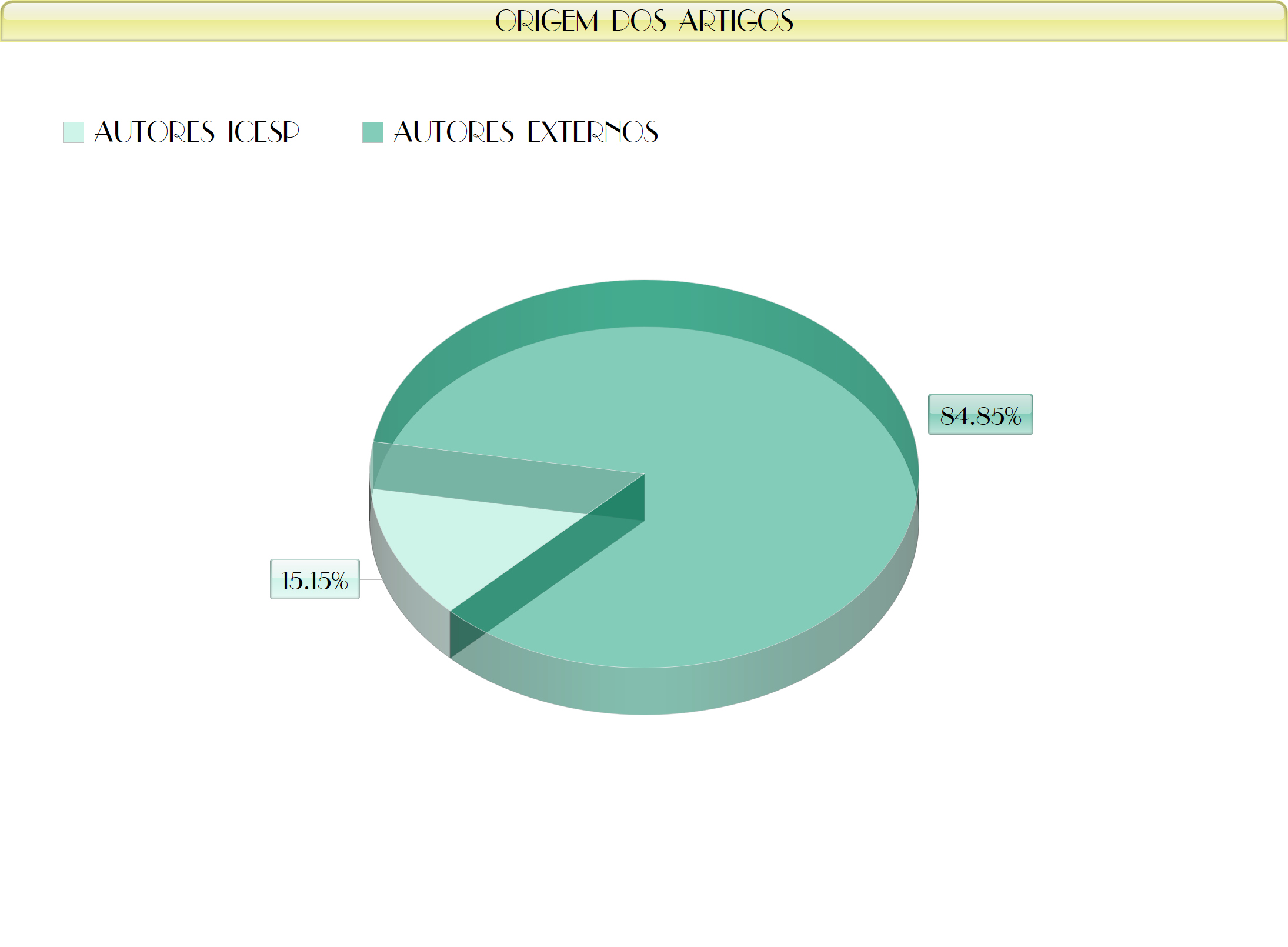TREINOS “FOR TIME” E “AMRAP” DE CROSSFIT INDUZEM A HIPOTENSÃO PÓS-EXERCíCIO
Resumo
RESUMO
Objetivo: Avaliar as respostas hemodinâmicas de adultos saudáveis durante e após duas sessões de treinamento de CrossFit®, utilizando diferentes métodos. Métodos: 14 indivíduos do sexo masculino, normotensos, fisicamente ativos, com idade entre 25 e 35 anos, residentes no Distrito Federal, formaram a amostra. Os protocolos For Time e AMRAP foram aplicados. Foi mensurada a pressão arterial sistólica (PAS) e diastólica (PAD) e frequência cardíaca (FC) 15 minutos antes do início dos treinos. Entre cada bloco, houve intervalo de 3 minutos para mensuração da PAS, PAD e FC, que também foram mensuradas após 15, 30, 60 e 120 minutos. Resultados: Na análise da PAS, houve diferença significativa quando os treinos For Time e AMRAP foram comparados com o controle nos momentos de stress pré, com 15 e 30 minutos após as intervenções. Com 45 e 60 minutos após as intervenções, houve diferença significativa apenas do treino For Time em relação ao controle. Conclusão: O treinamento de CrossFit, realizado com os métodos “For Time” e “AMRAP”, foi eficiente na atenuação da PAS e PAD em homens normotensos verificados durante o transcorrer de 2 horas após a realização dos treinamentos.
Palavras-Chave: hipertensão arterial, exercício físico, CrossFit®, hipotensão pós-exercício.
ABSTRACT
Objective: To evaluate the hemodynamic responses of healthy adults during and after two CrossFit® training sessions using different methods. Methods: 14 physically active normotensive male individuals, aged 25 to 35 years, residing in the Federal District, formed the sample. The For Time and AMRAP protocols were applied. Systolic (SBP) and diastolic (DBP) blood pressure and heart rate (HR) were measured 15 minutes before the beginning of training. Between each block there was an interval of 3 minutes to measure SBP, DBP and HR, which were also measured after 15, 30, 60 and 120 minutes. Results: In the SBP analysis, there was a significant difference when the For Time and AMRAP training were compared with the control moment in the pre stress, 15 and 30 minutes after the interventions. At 45 and 60 minutes after the interventions, there was a significant difference only for For Time training in relation to the control moment. Conclusion: CrossFit training, performed with the “For Time” and “AMRAP” methods, was efficient in attenuating SBP and DBP in normotensive men verified during 2 hours after the training.
Key words: arterial hypertension, exercise, CrossFit®, hypotension pós-exercise.
Figshare DOI: 10.6084/m9.figshare.11196389
Palavras-chave
Texto completo:
PDFReferências
Xavier HT, Izar MC, Faria Neto JR, Assad MH, Rocha VZ, Sposito AC, et al. V Diretriz Brasileira de Dislipidemias e Prevenção da Aterosclerose. Arq Bras Cardiol. 2013;101(4):01–22.
Mancia G, De Backer G, Dominiczak A, Cifkova R, Fagard R, Germano G, et al. 2007 Guidelines for the Management of Arterial Hypertension: The Task Force for the Management of Arterial Hypertension of the European Society of Hypertension (ESH) and of the European Society of Cardiology (ESC). J Hypertens. 2007;25(6):1105–87.
American College of Sports medicine Position Stand. American College of Sports Medicine Position Stand. Med Sience Sport Exerc. 2004;36(3):533–53.
Hamer M. The anti-hypertensive effects of exercise: Integrating acute and chronic mechanisms. Sport Med. 2006;36(2):109–16.
Cornelissen VA, Buys R, Smart NA. Endurance exercise beneficially affects ambulatory blood pressure: A systematic review and meta-analysis. J Hypertens. 2013;31(4):639–48.
Zaleski AL, Taylor BA, Park CL, Santos LP, Panza G, Kramarz M, et al. Using the immediate blood pressure benefits of exercise to improve exercise adherence among adults with hypertension. J Hypertens. 2019;37(9):1877–88.
Wang J, Zhu W. Effects of Resistance Training on Resting Blood Pressure: A Meta-Analysis of Randomized Controlled Trails. Med Sci Sport Exerc. 2010;42(December):297.
SALLES, BELMIRO, ALEX MAIOR, MARCOS POLITO, JEFFERSON NOVAES, JEFF ALEXANDER, MATHEW RHEA RS. INFLUENCE OF REST INTERVAL LENGTHS ON HYPOTENSIVE RESPONSE AFTER STRENGTH TRAINING SESSIONS PERFORMED BY OLDER MEN. 2010;24(11):3049–54.
Jannig PR, Cardoso AC, Fleischmann E, Coelho CW, Carvalho T de. Influência da ordem de execução de exercícios resistidos na hipotensão pós-exercício em idosos hipertensos. Rev Bras Med do Esporte. 2009 Oct;15(5):338–41.
de Matos DG, Aidar FJ, Filho MLM, da Silva Salgueiro R, de Oliveira JC, Klain IP, et al. Analysis of hemodynamic responses to resistance exercise performed with different intensities and recovery intervals. Health (Irvine Calif). 2013;05(02):159–65.
Saldanha MA, Vilaça-Alves J, Neto GR, Novaes JDS, Saavedra F, Reis VM, et al. Acute effect of resistance exercise performed at different intensities on the hemodynamics of normotensive men. Motricidade. 2016;12(1):60–8.
G G. Metabolic Conditioning. CrossFit J. 2003;1–8.
Rezk CC, Marrache RCB, Tinucci T, Mion D, Forjaz CLM. Post-resistance exercise hypotension, hemodynamics, and heart rate variability: Influence of exercise intensity. Eur J Appl Physiol. 2006;98(1):105–12.
Ferrari R, Umpierre D, Vogel G, Vieira PJC, Santos LP, de Mello RB, et al. Effects of concurrent and aerobic exercises on postexercise hypotension in elderly hypertensive men. Exp Gerontol. 2017;98:1–7.
Dimeo F, Pagonas N, Seibert F, Arndt R, Zidek W, Westhoff TH. Aerobic exercise reduces blood pressure in resistant hypertension. Hypertension. 2012;60(3):653–8.
Simão R, Fleck SJ, Polito M, Monteiro W, Farinatti P. Effects of resistance training intensity, volume, and session format on the postexercise hypotensive response. J Strength Cond Res. 2005;19(4):853–8.
Doederlein Polito M, Simão R, Weber Senna G, de Tarso Veras Farinatti P. Hypotensive effects of resistance exercises performed at different intensities and same work volumes. Rev Bras Med do Esporte. 2003;9(2):74–7.
Brown MD, Srinivasan M, Hogikyan R V., Dengel DR, Glickman SG, Galecki A, et al. Nitric oxide biomarkers increase during exercise-induced vasodilation in the forearm. Int J Sports Med. 2000;21(2):83–9.
Apontamentos
- Não há apontamentos.
Revista Brasileira de Pesquisa em Ciências da Saúde - RBPeCS - ISSN: 2446-5577
Indexadores:













